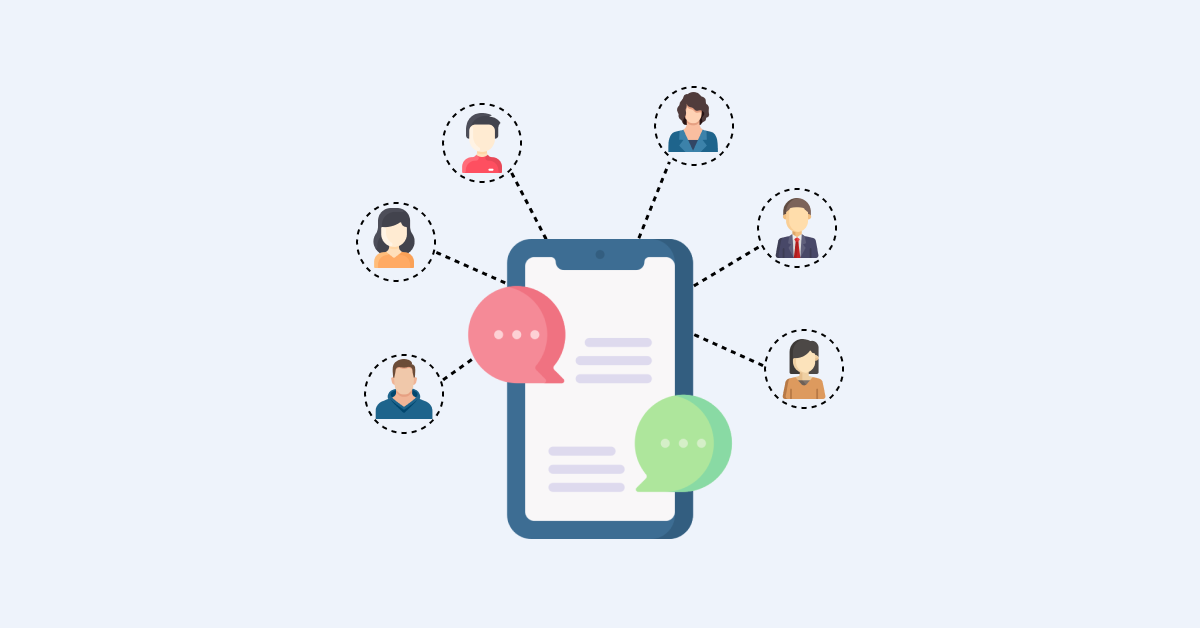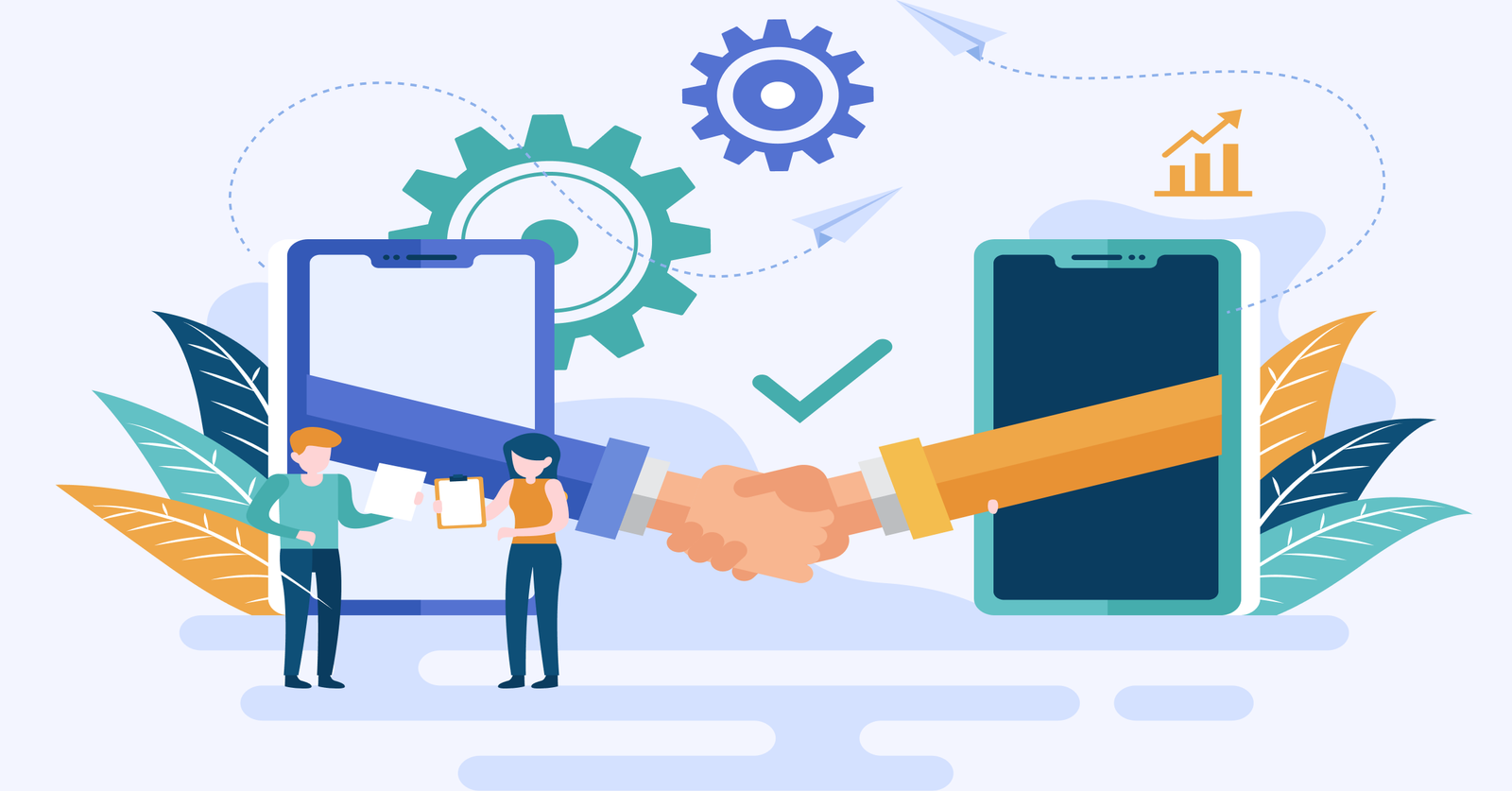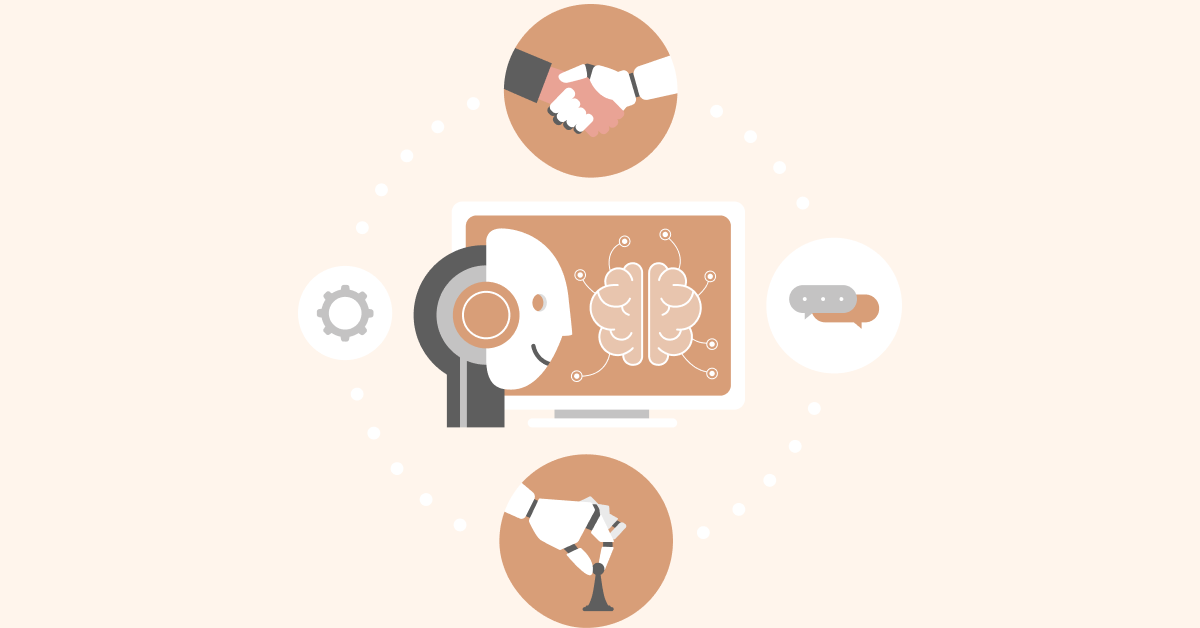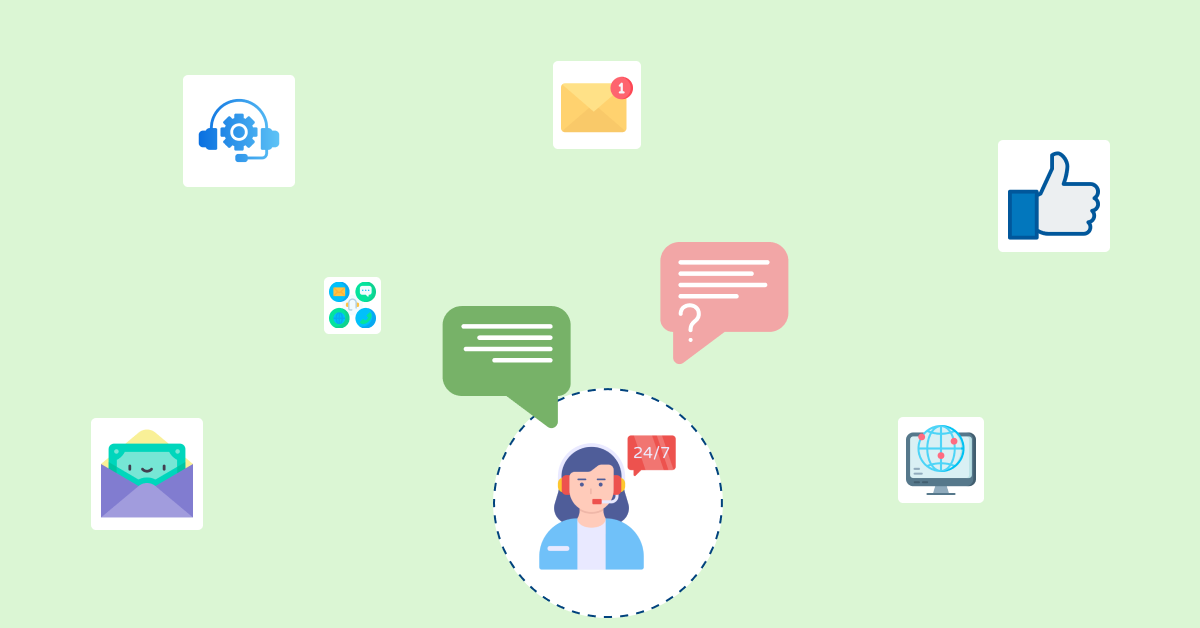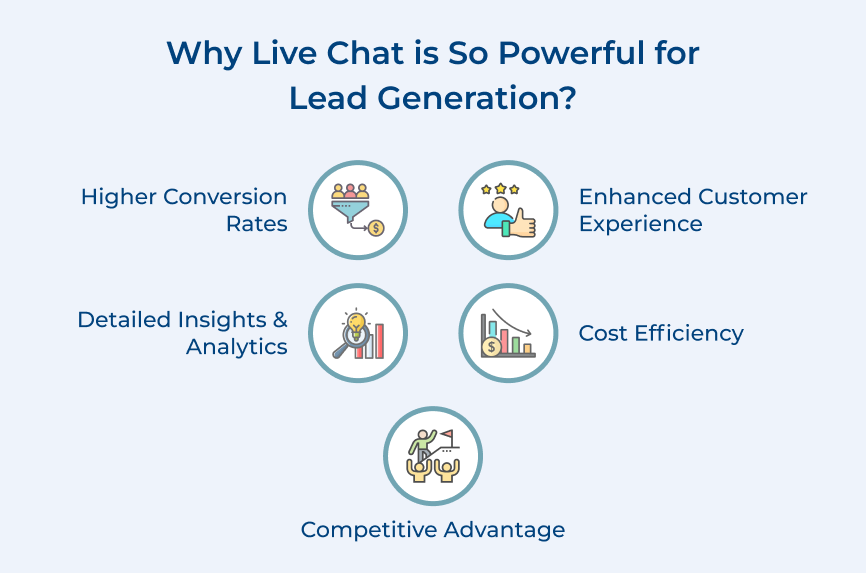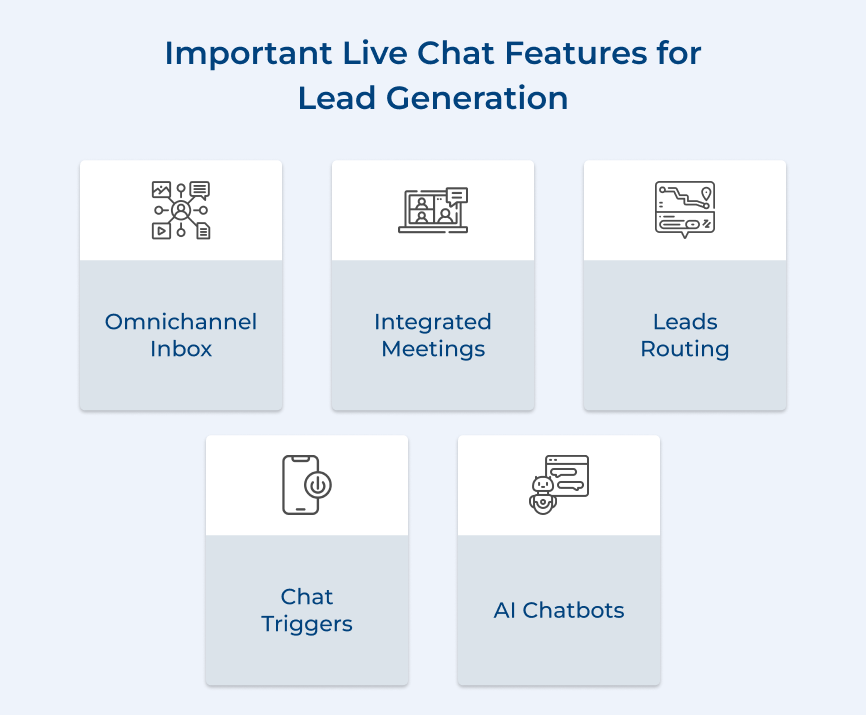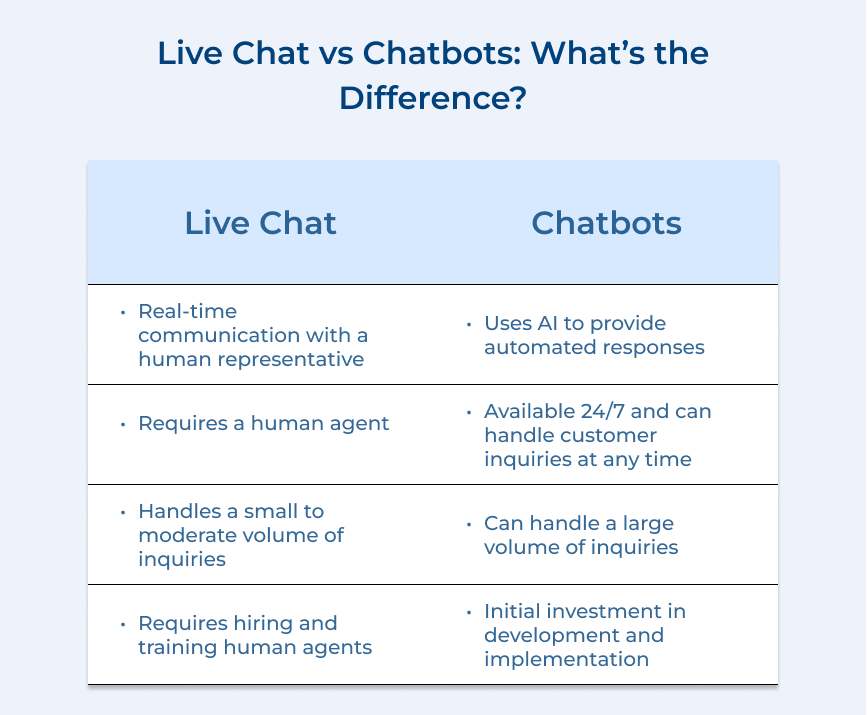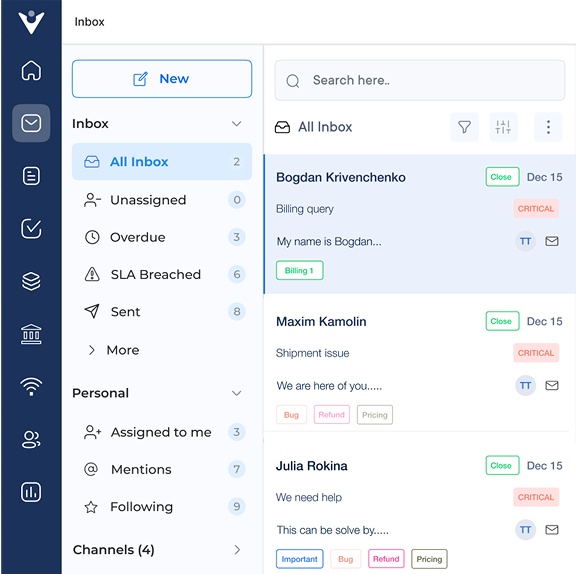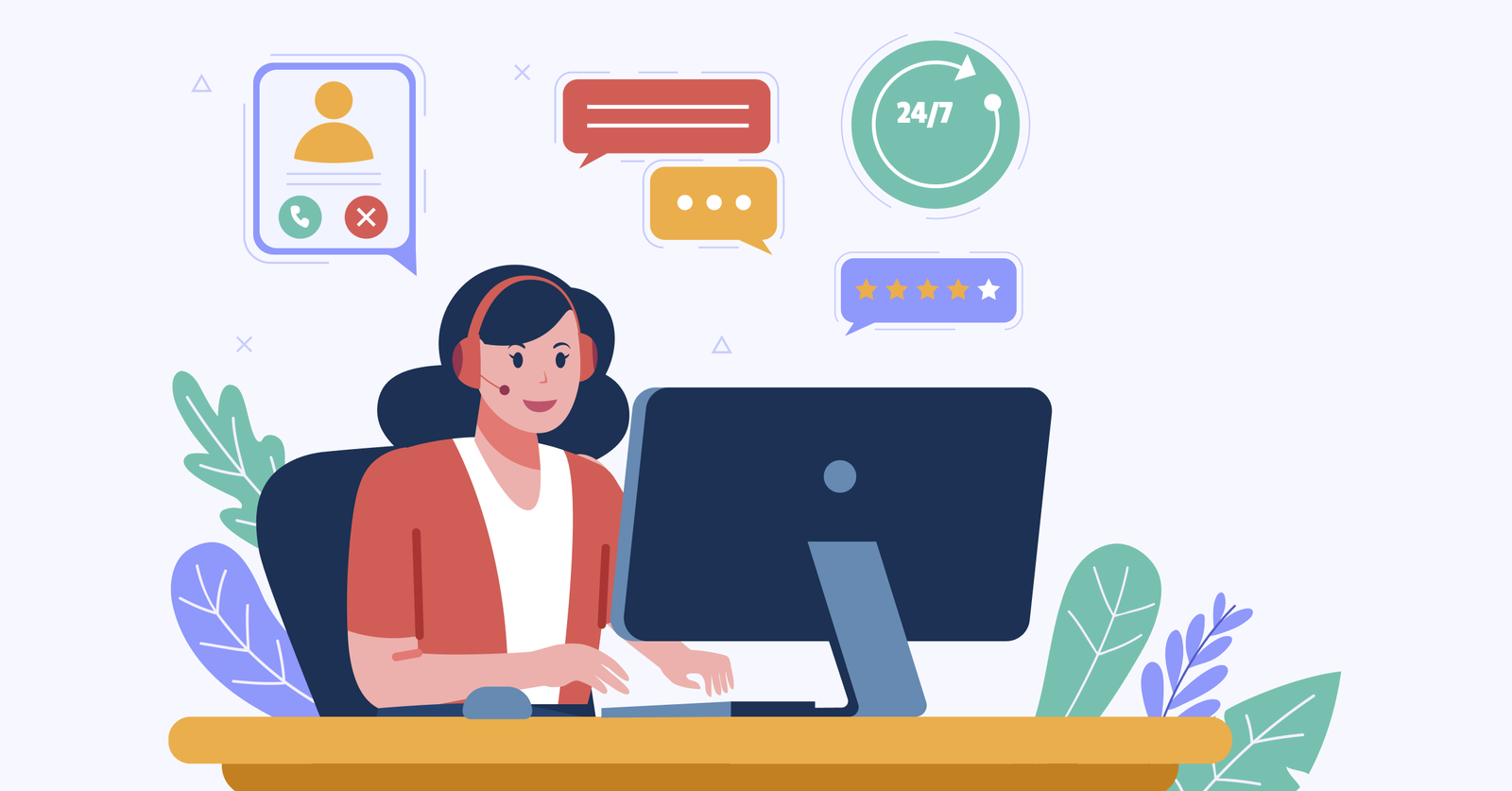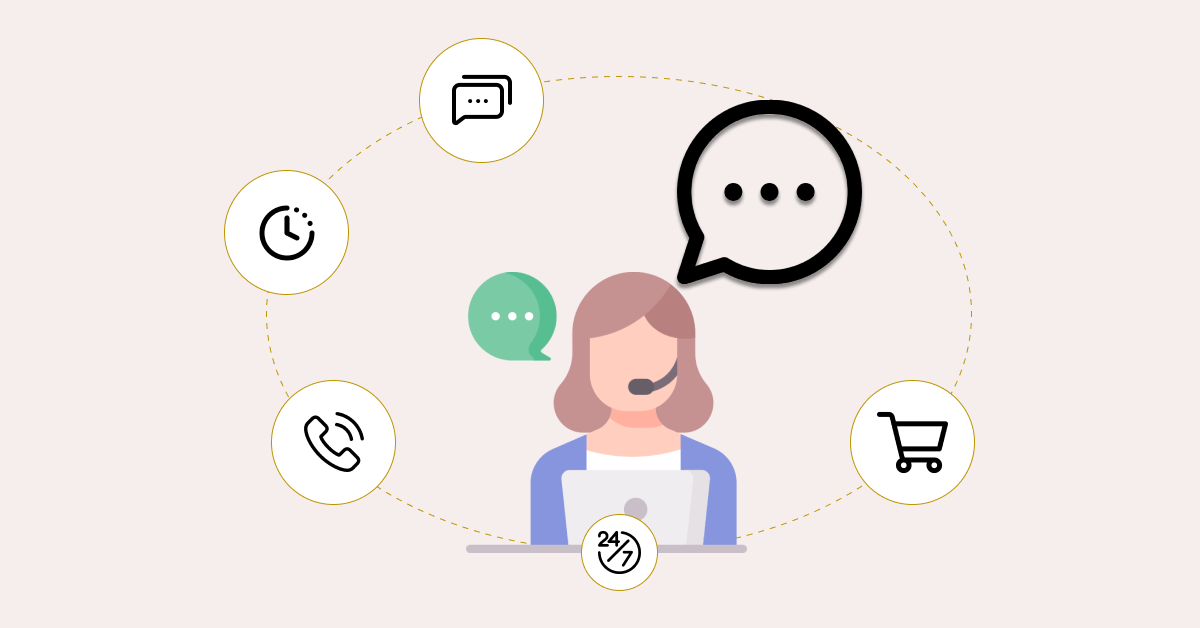Two popular tools that have emerged in recent years to meet these needs are live chat and chatbots. While both serve the purpose of enabling interaction between businesses and customers, there are several key differences between the two..
1. Human Interaction vs Automation
The most obvious difference between live chat and chatbots is the level of human interaction involved. Live chat involves real-time conversations with a human customer service representative, providing a personalized touch and the opportunity for immediate resolution of issues.
Chatbots use artificial intelligence to automate responses, providing pre-set answers without the need for human intervention.
2. Personalization
Live chat enables personalized interactions where agents can empathize, build rapport and offer tailored solutions based on individual customer needs. The human touch strengthens customer relationships, leading to greater satisfaction and loyalty.
Although they have become quite advanced, chatbots still cannot provide a personalized experience. They rely on user data and predefined scripts, limiting their capability to cater to unique customer requirements.
3. Scalability
Live chat operates on a one-to-one basis, with customer service representatives handling one conversation at a time. While the tool allows for personalization, it can become overwhelming during peak times or when there is a high volume of customer inquiries.
Chatbots can handle multiple conversations simultaneously, offering businesses the ability to scale their customer service operations efficiently.
4. Availability
Live chat is available during specific business hours, often resulting in limited availability for customers seeking support outside those hours.
Chatbots offer 24/7 availability, allowing customers to receive assistance at any time of the day or night. This 24/7 availability provides convenience and immediacy for customers, enhancing their overall experience.
5. Integration
Live chat requires a human agent to operate, necessitating the integration of chat software with an existing customer service team. The integration may involve training, coordination and allocation of resources.
Chatbots can be seamlessly integrated into a website or messaging platform without the need for additional human resources. It makes them a cost-effective solution for businesses.
6. Cost
Implementing live chat typically involves hiring and training support staff, along with ongoing salary expenses. While it provides a high level of customer service, it can be costly for small or medium-sized businesses.
Chatbots offer a cost-effective alternative. Once implemented, they require minimal maintenance and can handle a significant volume of inquiries. It reduces the need for a large support team.
Live Chat Lead Generation Best Practices
Check out the top best practices to help you effectively utilize live chat as a lead generation powerhouse, turning fleeting website visits into sustainable business relationships.
